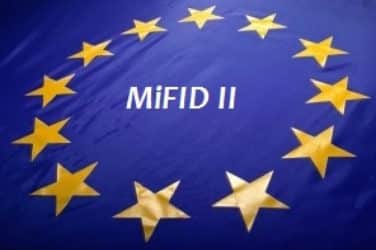
Regulators are leaning on market participants to prove trade execution was in fact best execution, raising the bar for sell-side brokers and their buy-side clients alike.
Take Markets in Financial Instruments Directive, the sweeping European ruleset whose second iteration goes into effect in January 2018. Under MiFID II, brokers can no longer bundle execution and research — instead, both are stand-alone deliverables that are to be judged on their own merits. .
The regulation marks a sea change from the longstanding way of doing business in institutional trading, in which the sell side has some wiggle room in delineating the value proposition of its research and trading products, and the buy side can’t be quite sure exactly what it pays for either.
The effect on research, namely how it will be paid for, has garnered significant attention in the lead-up to MiFID II implementation. There hasn’t been enough talk about the important implications for the execution side of the business, according to some market observers.

Joe Wald, Clearpool
“For brokers to remain relevant with regard to their execution platform, they have to embrace the new technology that’s out there with respect to transparency and control,” said Joe Wald, chief executive officer of trading-technology provider Clearpool Group. “Ultimately, there needs to be a more collaborative experience with the buy side, to work through what best execution is on a per-client basis.”
A key change in MiFID II is that buy-side firms will be required to take ‘sufficient’ steps to demonstrate best execution, as opposed to MiFID I’s more forgiving provision of ‘reasonable’ steps. Investment managers are reviewing what the heightened standards mean for them, especially across asset classes and in light of the additional market data that will be available under the new ruleset.
“Firms will need to ensure they have robust and non-generic execution policies in place, conduct effective monitoring to correct any deficiencies in their arrangements, and undertake thorough annual reviews of their arrangements to ensure they are achieving the best results for clients on an ongoing basis,” said Adele Rentsch, associate in market regulation at trade group Alternative Investment Management Association.
Under MiFID2, firms will be required to publish reports on their execution arrangements and the quality of execution achieved, Rentsch noted. “The level of accountability and transparency required under MiFID2, across the buy side, sell-side and the venues, will present both challenges and opportunities to firms.”
“Ultimately, it will be important for buy-side firms to ensure they are capturing all the relevant information and making best use of it in making their own investment decisions and executing trades,” she continued. “Firms will also need to use this newly available information to review their existing relationships with venues and brokers to verify that they are indeed achieving the best results on an ongoing basis.”

Adele Rentsch, AIMA
MiFID II is a European Securities and Markets Authority product, but it has global reach by applying to all firms that trade on European markets. In a broad sense, the regulation is the latest step in a post-crisis continuum of markets moving toward more transparency and accountability.
One sell-side executive noted that markets have been heading in the direction of MiFID II over the past several years, independent of the developing rule set. Indeed, buy-side trading desks have been deploying more sophisticated technology to route trades most efficiently, achieve best execution, and better measure transaction costs; MiFID II serves to emphasize and standardize this drive towards being more quantifiable and transparent.
The separation of execution and research will entail a lift on the part of market participants, but the de-linking also presents an opportunity for brokers who effectively ‘productize’ each of the two. “The sell side is going to need the tools, and the ability to collaborate, on a much different level than they are accustomed to on the electronic trading side today,” said Clearpool’s Wald.
“From an execution standpoint, you need to be able to have a constructive dialogue with the buy side so you can craft a best-execution model and strategy. You need the tools to build and evaluate strategies in a continuous cycle,” Wald added. “If you are not able to do this, you are unprepared for what’s coming and you very much risk a portion of your franchise. Brokers who are able to uniquely differentiate their research and execution as stand-alone products have a better chance of ensuring they maintain both sides of the business.”





